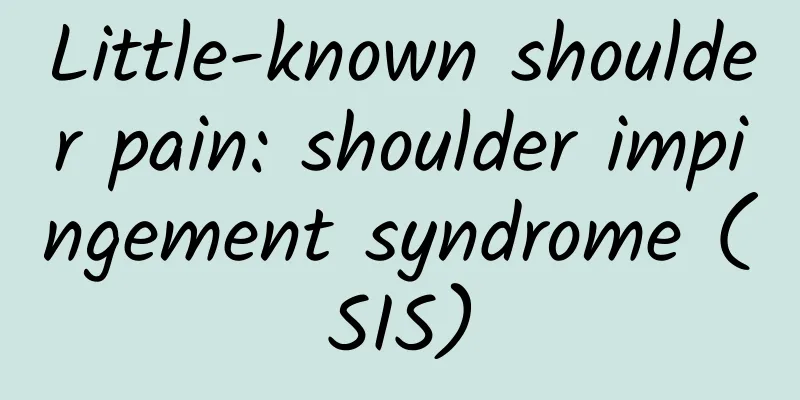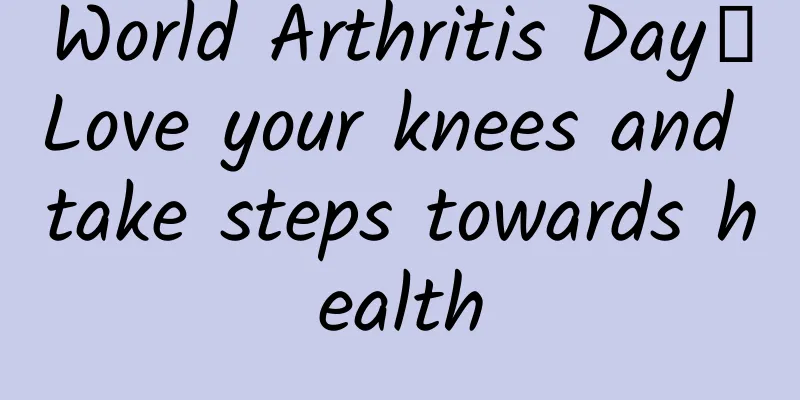Little-known shoulder pain: shoulder impingement syndrome (SIS)

|
The shoulder joint is the joint with the greatest range of motion and the most frequently used joint in the human body, so it is often the most vulnerable to disease. Shoulder pain often affects people's quality of life. Common shoulder pains include: frozen shoulder, shoulder impingement syndrome, rotator cuff injury, bursitis, long head of biceps tendonitis, etc. Causes: 1. Abnormal morphology of the anterolateral end of the acromion, osteophyte formation, osteophyte formation on the greater tuberosity of the humerus, and other reasons lead to the narrowing of the gap between the acromion and the humeral head. The humeral head hits the structure under the acromion, and repeated impact causes aseptic inflammation of the bursa. 2. It occurs due to loss of dynamic stability secondary to overuse of the rotator cuff, or due to insufficient static stability, resulting in secondary impingement symptoms caused by excessive movement or instability of the glenohumeral joint. Repeated impacts cause the bursa and tendon to be damaged, degenerated, and even ruptured. Diseases that cause shoulder impingement syndrome include subacromial bursitis, supraspinatus calcific tendinitis, biceps long head tenosynovitis, rotator cuff degeneration, and other disease changes. 2. The harm of misidentification Many people think that shoulder pain is frozen shoulder, and often adopt self-training methods such as "wall climbing" and "hand shaking". However, among the common diseases related to shoulder pain, only about 10% of the pain is caused by frozen shoulder, and it is more common in middle-aged and elderly people. On the contrary, shoulder impingement syndrome and rotator cuff injury cause 80% of the pain. Therefore, if shoulder pain occurs, the first thing to do is to make a clear diagnosis and take targeted measures. If the shoulder pain is not caused by frozen shoulder, but by shoulder impingement syndrome, blindly exercising will cause secondary injury and aggravate the condition. 3. SIS staging: According to the degeneration of the subacromial tissue and the degree of rotator cuff injury, SIS is usually divided into three stages: edema and hemorrhagic stage, inflammatory fibrosis stage, and tendon rupture stage. 4. Common symptoms of shoulder impingement syndrome at each stage: 1. Chronic dull pain in the front of the shoulder that worsens during lifting or abduction. 2. Pain arc sign: Pain or worsening symptoms occur when the affected arm is raised to 60° to 120°. The pain arc sign only exists in some patients and is sometimes not directly related to shoulder impingement syndrome. 3. Gravel crunching sound The examiner holds the front and back edges of the acromion of the affected arm with his hands, and can feel the gravel crunching sound when the upper arm is rotated internally and externally and flexed and extended. It is easier to hear it with a stethoscope. Obvious gravel crunching sound is more common in stage 2 acromion impingement syndrome, especially in patients with complete rotator cuff rupture. 4. Muscle weakness Significant muscle weakness is closely related to the late-stage shoulder impingement syndrome of extensive rotator cuff tears. In the early stages of rotator cuff tears, the abduction and external rotation of the shoulder are weakened, sometimes due to pain. V. Inspection methods: 1. Impingement test: The examiner presses down on the patient's affected scapula with his hand and raises the affected arm. If pain occurs due to the impact of the greater tuberosity of the humerus and the acromion, the impingement test is positive. 2. Neer test: The patient's arm is forced to passively raise in the scapular plane (arm flexed 30 degrees forward) while the examiner internally rotates the patient's entire arm, especially the humerus. Active impact experiment: Place one hand on the other shoulder, lift the elbow joint to the forehead, and squeeze the tissue in front of the shoulder joint. 4. Hawkins test: The patient sits, flexes the shoulder 90°, flexes the elbow 90°, and performs internal rotation of the shoulder joint (turn the hand downward). If pain occurs in the shoulder joint, there may be a shoulder impingement sign. 6. Prevention methods: The rotator cuff muscles are four muscles that stabilize the shoulder joint, including the supraspinatus, infraspinatus, teres minor, and subscapularis. Strengthening training for them can protect the stability of the shoulder joint and prevent the occurrence of shoulder impingement syndrome caused by rotator cuff weakness. Shoulder internal rotation: (subscapularis) Sit on a stool, straighten your chest and abdomen, keep your elbows against your sides, put a towel under your armpits to secure them, bend your elbows 90 degrees, pull the elastic band toward the midline of your body, keep your elbows in place, and don't rotate your body. Do 15-20 times per set, three sets per day. Shoulder external rotation: (infraspinatus, teres minor) Sit on a stool, straighten your chest and abdomen, keep your elbows against the sides of your body, put a towel under your armpits to secure them, bend your elbows 90 degrees, pull the elastic band outward from the midline of your body, keep your elbows in place, and don't rotate your body. Do 15-20 times per set, three sets per day. Shoulder abduction 30° (supraspinatus) Sit on a stool, straighten your chest and abdomen, hold the weight on one arm, stretch your arm outward, and do not tilt your body to compensate. 15-20 times per set, three sets per day. 7. Massage therapy Stage I and II SIS can achieve satisfactory results through conservative treatment. Massage therapy is a common conservative treatment for shoulder impingement syndrome. Commonly used techniques include rolling, grasping, kneading, pressing, plucking, etc., supplemented by shoulder joint shaking and stretching, etc., acting on the affected shoulder of the patient, which can improve blood circulation and promote injury repair. |
<<: There is a crackling sound in the cervical spine. Is there anything abnormal?
>>: Can a virus be transmitted through kissing? That’s right, it’s called the “kissing virus”!
Recommend
5 cm ovarian cyst
In our lives, many women with ovarian cysts will ...
What should pregnant women drink when they are thirsty?
The body will frequently feel thirsty due to exce...
Is surgery necessary for pelvic masses?
Friends who suffer from pelvic masses do not nece...
How to rule out ectopic pregnancy in early pregnancy?
Everyone is afraid of ectopic pregnancy, so when ...
Causes of postpartum fever
Many women will feel uncomfortable for a period o...
How to replenish Yang Qi for women
In our lives, most women suffer from the disease ...
What causes amniotic fluid embolism?
Amniotic fluid embolism is a condition that many ...
What is the regularity of women's menstrual period?
Every woman wants her menstruation to be normal, ...
What are the preparations before induction of labor?
Some female friends will choose to have an induce...
Why do I have pain during menstruation?
Every woman feels weaker during her menstrual per...
What to do if a breastfeeding mother has diarrhea
Breastfeeding is a relatively sensitive period. F...
My girlfriend is pregnant and she doesn't want it. What should I do?
When both parties are not married yet, women may ...
What are the reasons for delayed menstruation when you are not pregnant?
Menstruation usually lasts about one month and is...
What are the main symptoms of non-gonococcal vaginitis?
Nowadays, it is common for women to suffer from v...
[Medical Q&A] What kind of serious harm can tiny dust mites cause?
Author: Wang Ling Children's Hospital Affilia...









